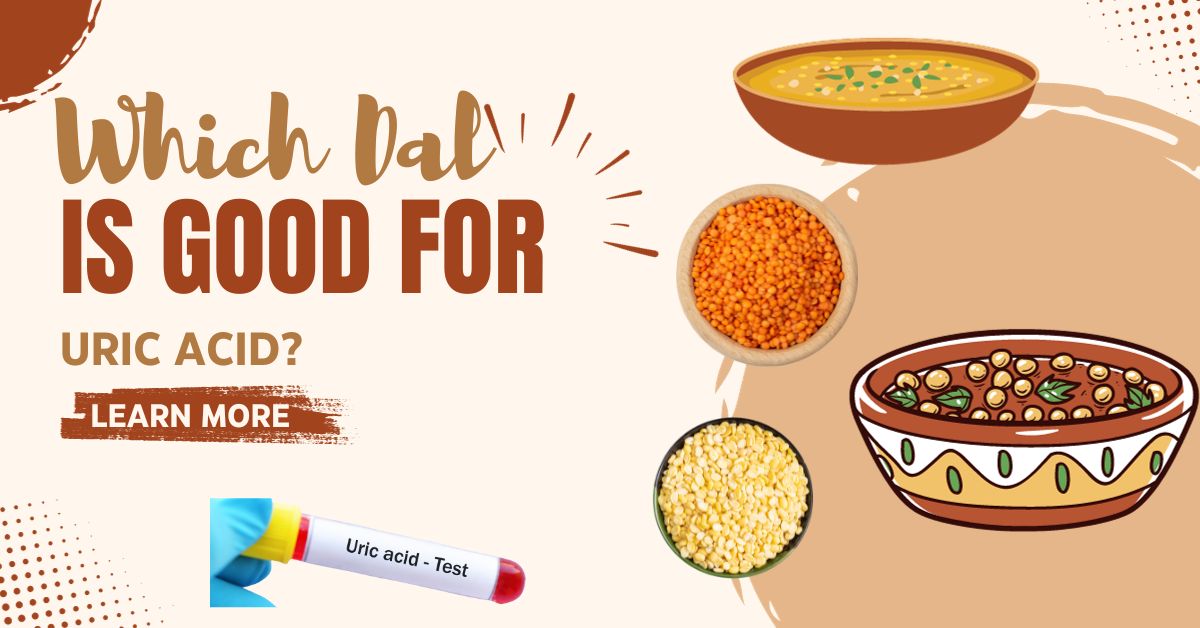Comprehensive Guide: Which Dal is Good for Uric Acid?

Understanding Uric Acid and Diet
Dal (Indian pulse) is the perfect mix of protein and fiber, making it suitable for people with high uric acid levels. For vegetarians, dal is an important part of their daily diet. Most Indian pulses like toor, masoor, moong, chana, and kala chana are fine for daily consumption. Since most pulses are suitable for consumption, it is difficult to determine which dal is good for uric acid patients.
Moderation in Dal Consumption
You should remember that the amount of dal consumed needs to be kept in check. 40 to 50 grams of dal can be easily consumed daily as a part of a vegetarian diet.
It is important to ensure that there is variety in the pulses consumed. It is not recommended to eat the same dal every single day. The rotation is good. Try to eat different pulses every day. This is how you can ensure that you get the best out of your pulses without having to worry about uric acid levels.
Can Uric Acid Patients Consume Dal/Pulses?
If consumed moderately, dal/pulses are safe to eat, even if you have uric acid issues. You should keep in mind that despite having high uric acid levels, you still need enough protein, fiber, antioxidants, and micronutrients to maintain good health.
Nutritional Benefits of Dal in an Indian Diet
Dal provides various essential nutrients in an Indian diet, including:
- Good levels of vitamin B complex like thiamine, riboflavin, niacin, pantothenic acid, folate, pyridoxine, etc.
- Sufficient protein, soluble and insoluble fiber.
- Essential minerals like iron, phosphorus, zinc, and calcium.
- Antioxidants - polyphenols like procyanidin and flavanols.
Dal vs. Nonvegetarian Foods
It should be noted that nonvegetarian foods like red meat, organ meat, and seafood are high in purine and contribute to the creation of excess uric acid in your body. Even though these nonvegetarian foods are rich in protein, you need to avoid or restrict these foods.
On the other hand, dal or pulses are considered to be among the best sources of vegetarian protein. They have moderate purine content. This is why dal is good for uric acid and is believed to be a safe option to include in your everyday diet.
Dietary fiber helps in controlling uric acid levels. Pulses have a sufficient amount of both soluble and insoluble fiber. You should regularly monitor your uric acid levels. Some studies have suggested that plant-based diets that include pulses are good for people with high uric acid. It has been recommended that you reduce the consumption of red meat, organic meat, seafood, and chicken if you have high uric acid levels.
Specific Dals and Their Impact on Uric Acid Levels
Toor Dal is Good for Uric Acid?
Toor dal or red gram is considered to be good for uric acid. This is because this dal is rich in fiber and protein.
Remember to thoroughly wash the dal and soak it at least for a few hours. You need to cook the dal well. You can consume 1-2 small bowls of toor dal without having any issues with uric acid levels. This should be part of a well-balanced diet. One hundred grams of toor dal has 22.3 grams of protein and 9.1 grams of total fiber. There are 6.8 grams of soluble fiber and 2.3 grams of insoluble fiber.
Masoor Dal is Good for Uric Acid?
If you have high uric acid levels, you can safely consume masoor dal. The recommended amount for consumption is between 40-50 grams of dal per day. This translates to 1-2 medium-sized bowls of masoor dal daily. The recommended consistency is medium. Ensure that you cook the dal in a decent amount of water. You should always wash the dal thoroughly and soak it before cooking it.
One hundred grams of masoor dal has about 25 grams of protein. It also contains 8.3 grams of insoluble and 2 grams of soluble dietary fiber. One hundred grams of raw masoor dal includes 127 mg of purine, which is considered to be a moderate level. When cooked, 100 grams of dal is left with only 74 mg of purine, which is considered to be a low level. This is why masoor dal is good for uric acid patients. Make sure that the lentils are soaked for at least 7-8 hours to get rid of antinutrients on the surface. Pulses should always be cooked well.
Does Moong Dal Increase Uric Acid?
Moong dal is considered to be safe for patients with high uric acid levels. One hundred grams of moong dal has 24.5 grams of protein and around 8.2 grams of total fiber.
One hundred grams of cooked moong dal has around 80 mg of purine. You can safely include 50 grams of moong dal in your daily diet. Make sure the dal is soaked for 7-8 hours and washed thoroughly to remove tannins, phytate, and other antinutrients.
Make sure you include pulses in a balanced diet. A balanced diet is a combination of different types of foods.
Chana Dal is Good for Uric Acid?
You can consume chana dal safely if you have high uric acid levels. 100 grams of chana dal
One hundred grams of chana dal contains 20 grams of protein and 15.3 grams of total fiber. Out of this, 12.7 grams is insoluble dietary fiber.
Cooked chana dal contains 19 mg of purine per 100 grams. You can safely consume 40-50 grams of chana dal in a day. Make sure that it is a part of a well-balanced diet.
Always remember to soak chana dal and wash it thoroughly to get rid of any antinutrients.
Kala Chana for Uric Acid
If you want to know whether kala chana dal is good for uric acid, you will be relieved. Kala chana or Bengal gram contains a high amount of fiber, therefore being good for patients with high uric acid levels. You should soak kala chana overnight and wash it thoroughly before cooking. Remember that lentils are safe in moderation, and you need to keep rotating them throughout the week.
How to Remove Uric Acid from Dal?
There are certain things that you can do as a form of pre-treatment. You need to wash the pulses thoroughly and soak them overnight based on the type of dal/lentils.
Pulses contain antinutrients like phytate, tannin, and other enzyme inhibitors on the surface. These steps help in reducing the antinutrient factors and make the nutrients more available for absorption. Cooking the dal well reduces the purine content to a great extent. Cooked lentils are considered low to very low purine foods.
Monitoring Uric Acid Levels
Uric acid levels should be tested regularly regardless of your gender. You need to be careful about uric acid levels even as a female because maintaining recommended uric acid levels for females is also essential.
If you want to test uric acid levels, you can reach out to us at O-LABS. Book your uric acid test today!





